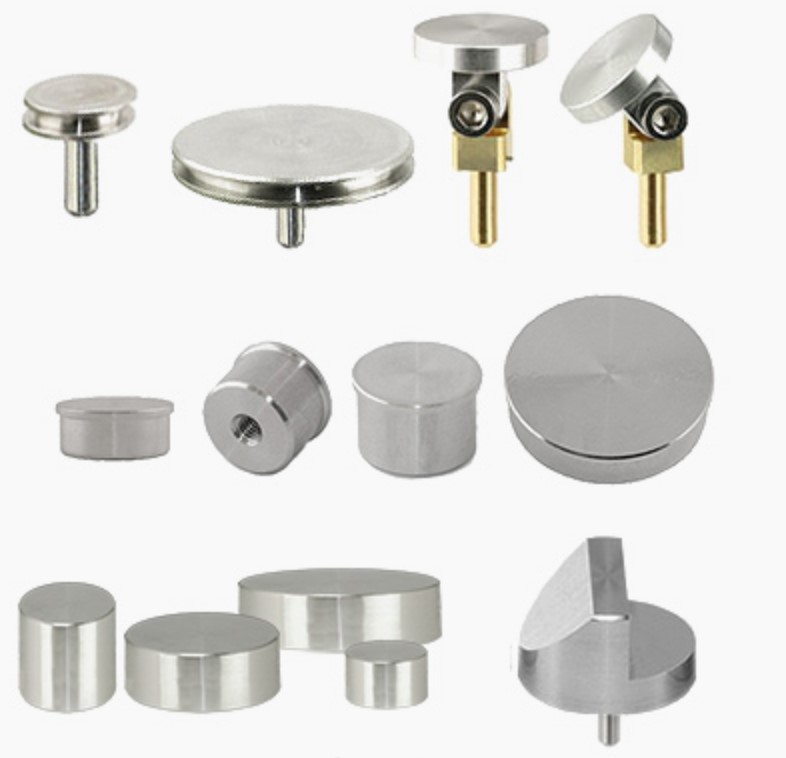Best Practices for Cleaning SEM Stubs and Mounts
Standard SEM stubs and mounts are used as substrates to mount samples for Scanning Electron Microscopy (SEM).

They are made from vacuum grade aluminum and must be clean when specimens are mounted. Two cleaning methods are mentioned here:
- Cleaning of new SEM stubs and mounts
- Recycling and cleaning of used SEM stubs and mounts
Cleaning of new SEM Stubs and Mounts
When new stubs are supplied, they are cleaned after manufacturing. However, different suppliers use different cleaning methods and hydrocarbons from packaging can be deposited on the SEM stubs during storage. Therefore, it is wise to devise a standard procedure for cleaning the SEM stubs and mounts before use. The cleaning procedure depends on the required cleanliness and the available infrastructure in the lab. Always inspect the SEM stubs and remove lint and dust. Handle clean SEM stubs with clean nitrile gloves.
Cleaning method 1: Rinse the new SEM stubs shortly in a 50/50% solution of isopropanol and acetone at room temperature and dry with warm air. Use a fume hood to extract solvents. Cleaning method 2: Clean the new SEM stubs with low power in a plasma cleaner or UV cleaning system; this should remove hydro carbons.
Recycling and cleaning of used SEM stubs to remove sticky tabs
The double sticky tabs or tape are rather difficult to remove from SEM stubs or mounts. The acrylic adhesive tends to be relatively strong. Removing the sticky tabs using mechanical methods is not possible because:
- Carrier is not strong enough to enable peeling off in one piece.
- Sticky tabs are too soft to be sanded off.
- They are too soft and too thin to remove with a razor blade.
The best method to remove the sticky tabs from SEM stubs is to dissolve the adhesive with chemicals using the following procedure:
- Remove samples from sticky tabs; do not recycle stub with reactive chemicals
- Place stubs in a sealed glass beaker and cover with acetone (small amounts of of other solvents like methanol, ethanol, isopropanol or hexane can be allowed)
- Let soak for at least an hour
- Remove stubs one at the time with a metal spoon
- Wipe stub across a sturdy paper towel to remove the sticky tab exercising moderate pressure
- If sticky tab is not fully removed, wet with acetone and repeat wiping across the paper towel
- Let dry
- Inspect SEM stubs:
- If scratches or markings are present, the surface of the stub can be improved by wet-sanding on 600 grit silicon carbide paper. Make sure the entire surface is ground flat.
- If stub is damaged or aluminum has visibly reacted, throw away.
- Rinse the recycled stubs shortly in 50/50% solution of isopropanol and acetone at room temperature and dry with warm air
- Store in a dry, dust-free environment.
Notes:
- Recycling SEM stubs is only cost effective for the more expensive and larger SEM stubs and mounts. For the standard 12.7mm pin stubs and 12.2mm JEOL stubs it is hardly cost effective, especially if one has to purchase solvents and take the time for cleaning into into account.
- Do not use recycled SEM stubs for critical applications such as particle analysis or GSR applications. The recycling procedure can disperse contaminants in the form of fine dust from samples onto the recycled SEM stubs.
- Care when using chemicals on aluminum; it can be easily etched
- Do not use adhesive remover; they can contain chemicals which tend to etch the aluminum stubs
Another, more elaborate, method for “Removal of double stick carbon top from SEM specimen holders” by Chissoe, Vezey and Skarla has been published in the 2003 Proceedings of the Oklahoma Academy of Science, pages 79-81. This method is suitable for cleaning the more expensive SEM sample holders.

